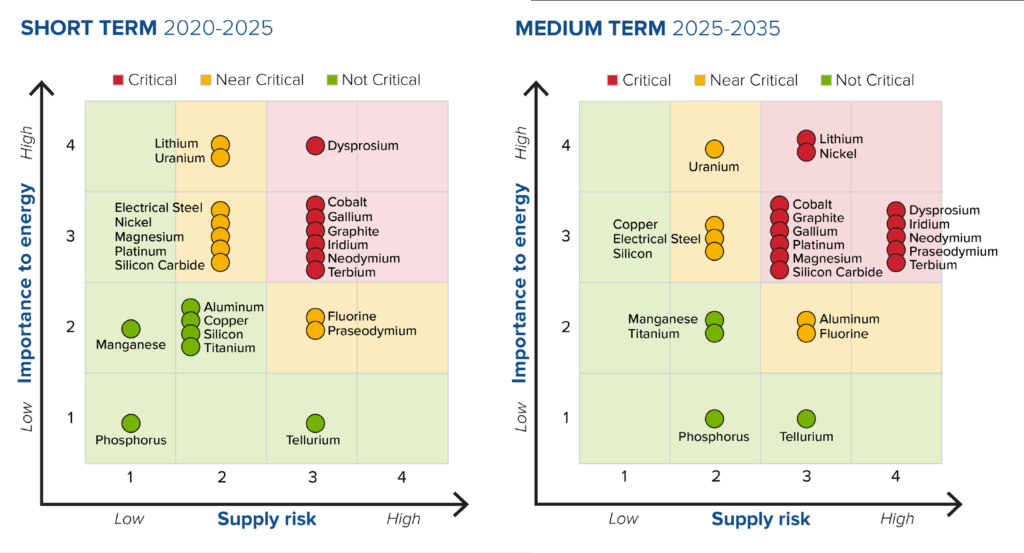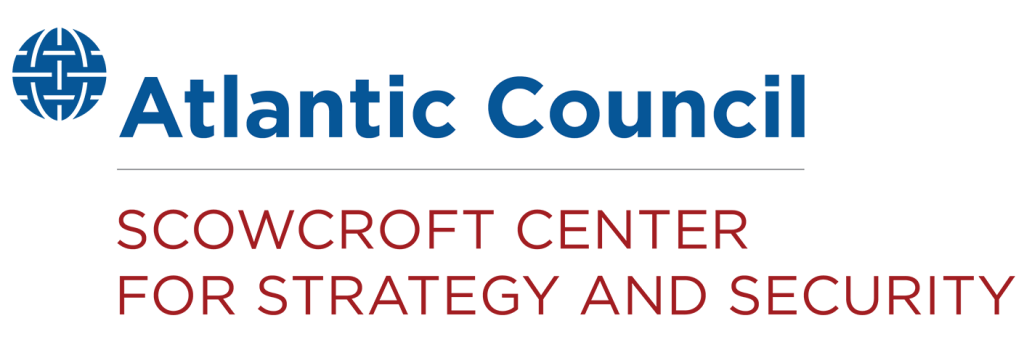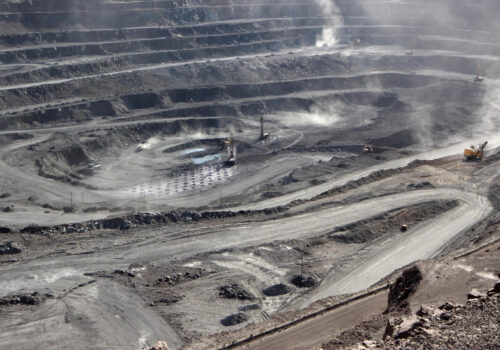A US framework for assessing risk in critical mineral supply chains
This issue brief assesses the US national and economic security risks within critical mineral supply chains by examining challenges to resilient, secure, and well-supplied supply chains. It guides US policymakers toward an effective strategy for managing geopolitical risk amid future disruptions. Critical mineral risks to US national and economic security should be evaluated on a mineral-by-mineral basis, improving the deployment of political and financial capital. When an end-to-end domestic supply of minerals cannot be achieved, strategically designed trade policies should ensure access, security, and price stability across critical mineral supply chains. Finally, over-the-horizon risks that will disrupt future supply chains, including export restrictions, conflict, logistical chokepoints, and extreme weather events should be folded into a wider critical mineral strategy.
Introduction
Minerals and metals enable the modern economy. From cellular phones to solar photovoltaics, satellites to semiconductors, mineral-based components are irreplaceable pieces of nearly every modern-day technology. Critical minerals range from high-volume commodities such as nickel and copper to niche elements such as tungsten, indium, lithium, and cobalt to rare-earth elements necessary for permanent magnets and alloys. These minerals pass from mine to finished product through complex supply chains that transform extracted minerals into usable precursors (e.g., chemicals, alloys) for manufactured technologies. Numerous stakeholders, including private-sector companies and public-sector agencies, shape supply chains based on market demand, profit margins, and national security considerations.
The United States needs ever-more minerals, metals, and materials. Yet its inability to supply the entirety of its mineral needs domestically creates vulnerabilities. Global supply chains are often controlled by unfriendly countries. China dominates, either due to the location of most midstream processing (in China), the development of upstream mining activity through Chinese investment abroad, or via the ownership of transshipment ports by Chinese firms. As the bilateral relationship between Beijing and Washington becomes more competitive, US mineral dependency has become a key source of leverage for China.
The United States should carefully assess its most significant vulnerabilities. The margin of error is slim. The development of new mines, alternative midstream processing infrastructure, and component manufacturing all take significant time and investment to first establish and then de-risk the overall supply chain. Establishing secure supply chains across all critical minerals will require engagement with reliable partners abroad, within an increasingly fractured global trade environment that will challenge how the United States builds such “de-risked” partnerships. Increasing geopolitical risk and potential disruptions to choke points are persistent risks, as are extreme weather events (e.g., drought, flooding, extreme heat) that will test supply chain resilience.
Mineral supply chains must satisfy three criteria: They must provide sufficient supply to meet demand at competitive prices; be resilient against disruption; and have low dependence on adversaries.
Though the United States has compiled several lists of minerals designated as “critical,” each individual mineral is unique regarding supply chain characteristics, possible substitutes, and risk vulnerabilities. An appreciation of relative criticality of these minerals will be necessary to effectively craft policy, build partnerships, and drive investment. Failure to appreciate the full spectrum of factors will render the best supply chain strategy moot.
This brief explores how this full spectrum should be understood. It examines “dual use” minerals (meaning those with relevance to both economic security and national security), evaluating how risks might manifest and test supply chain resilience. The brief also outlines framing principles to guide assessments of supply chain vulnerabilities.
What “risk”? The vulnerability of US national and economic security to mineral supply chain dependency
Mineral demand in the United States continues to grow. Ongoing demand for “base” metals such as copper and nickel is projected to increase substantially (copper by 50 percent and nickel by 100 percent by 2050) for reshored domestic manufacturing and electricity transmission for artificial intelligence-driven data centers. The International Energy Agency (IEA) forecasts demand for ‘transition minerals’ such as graphite, lithium, zinc, rare earth elements (REEs) and cobalt (necessary for scaled battery storage, geothermal energy production, carbon capture and sequestration, the hydrogen economy, and solar panels, among other technologies) to grow substantially (for example, lithium by eight-fold and graphite by four-fold by 2040).
Critical minerals are also central to national security for defense systems. Radar absorbing material requires a range of minerals including barium and copper composites, for example. REEs are used in permanent magnets for precision guided munitions and radar systems. Antimony is used as a hardening agent for ammunition. Lithium is needed for durable airframes, while natural graphite is used for heat resistance in nearly every major defense asset, from aircraft to tanks to jet turbines.
Minerals must be processed and refined to become valuable as alloy precursors, sub-components, or final goods. Midstream assets therefore are as important as upstream resources. Lithium, for example, occurs naturally as both a mined ore and a brine, but must be refined into lithium compounds for use in batteries for energy storage. Usable graphite begins as a natural flake graphite before being processed and incorporated in a usable polymer or resin.
US national and economic security dependencies on raw mineral resources and processing capabilities create vulnerabilities that fall into three broad categories:
Inflation and cost-competitiveness of manufacturing: Most minerals have specific properties offering electrical conductivity, heat resistance, or chemical interactivity. Substitution is often a poor solution, with significant drops in performance or increased cost, leaving industry with scant options should supply chain disruptions occur. The resulting relative price inelasticity is itself a risk. A copper price shock of 10 percent, for example, can increase inflation by roughly 0.2 percent per annum. High prices for minerals such as aluminum, lithium, cobalt, REEs, and graphite can handicap the cost-competitiveness of domestic manufacturing relative to other nations, specifically China. Stable and smoothly functioning supply chains are critical to limiting the frequency, or severity, of these inflationary risks.
Shortages and disruption: Supply chain shortages and disruptions can undermine manufacturers’ abilities to deliver products reliably and on time. Although supply chain-driven shortages are a known phenomenon following the COVID-19 pandemic, they continue to pose persistent strategic risks to military readiness and defense planning. For example, given US munitions sales to Ukraine following Russia’s 2022 invasion, the availability of antimony, which is used in ammunition and other military applications, is a major concern.
The possibility of shortages of matériel and disruptions to defense-related supply chains poses two distinct challenges. First, aggregate supply needs to meet both expected consumer demand as well as related stockpiling (in anticipation of supply disruptions). Second, reliable options need to exist for downstream consumers, with sufficient resiliency built into supply chains to withstand foreign meddling or disruption.
Dependencies, geopolitical influence, and foreign policy: Dependence on global mineral supply chains represents a significant vulnerability for the United States, leaving it exposed to the leverage of resource-rich countries or market incumbents abroad. Rising global mineral demand and resource nationalism have complicated the United States’ efforts to seek favorable trading, investment, and national security partnerships. These dependencies can negatively impact US foreign policy decision-making, including inhibiting the United States from acting to counter hostile actions, as was seen in the delays in sanctioning Russian nickel, aluminum, and copper production for two years following Moscow’s decision to invade Ukraine in 2022.
There are numerous factors that need to be considered to understand relative criticality of individual minerals. Certain minerals, such as copper or nickel, have less complex supply chains. Others take longer to develop; some may be bolstered through non-traditional sourcing; and still others eventually could be supplanted through circularity solutions including recycling. Demand elasticity may also change. A 2023 assessment from the Department of Energy began to feature some of these factors.

Mineral supply chains and core national and economic security risks
There are four core categories of risk that policymakers must take into consideration to ensure that the United States has well-supplied, secure, and resilient access to critical mineral supply chains.
China‘s dominance of critical minerals supply chains: At the heart of the risk set is China, which is dominant throughout many of the mineral and metal supply chains that the United States requires for its national and economic security.
China’s position owes in part to its domestic market share of critical minerals mining, processing, and refining. China dominates production—78 percent of natural graphite, 60 percent of rare earth elements, 60 percent of lithium processing, and 70 percent of cobalt refining—and the midstream, which is even more pronounced: China refines nearly all battery-grade graphite, over 90 percent of rare earths, and 60-70 percent of global lithium and cobalt supplies.
China’s influence extends well beyond its borders. Since the early 2000s, Beijing’s strategy of aggressive investment in international mining concessions, refining and processing assets, as well as transportation infrastructure has given it an unmatched scale of influence in global minerals supply chains. During this period, China provided nearly $57 billion in aid and subsidized credit to support transition mineral mining and refining projects focused on nineteen targeted Belt and Road Initiative countries.
This market dominance allows China to manipulate supply, undercut potential competitors, and discourage new entrants through high price volatility. It also empowers the Chinese government to promote its domestic production and processing standards globally, enhancing its competitive edge and influence over the terms of trade.
China’s dominance of the global critical minerals market combined with its rise as a near-peer geopolitical competitor to the United States makes Washington’s management of its supply chain vulnerabilities even more difficult.
This is exemplified in China’s willingness to leverage its position against the United States through export bans or other disruptions. It has already used this leverage against other countries for geopolitical advantage. A common example is its ban of REE exports to Japan in 2010 following a territorial dispute over the Diaoyu/Senkaku Islands. More recently, China has escalated export restrictions on minerals such as gallium and graphite in response to US restrictions on semiconductor exports, plus placed export controls on tungsten and indium (among several others) in response to the introduction of tariffs on Chinese goods by President Donald Trump. These measures exemplify Beijing’s willingness to use critical minerals as a tool to influence or respond to US policies.
China’s influence across the minerals supply chain has shaped how, where, and whether new, non-Chinese supply chain assets are developed. China’s ability to adeptly manage price volatility, keep critical minerals markets over-supplied, and secure offtake contracts at a lower cost offer Chinese-led projects considerable advantages compared with market participants from other countries. As a result, many new private-sector projects led by the United States and its allies struggle to compete with those led by China. Beijing also offers political support to its projects to alleviate investment uncertainty and conducts strategic diplomacy to make new mining projects successful. Non-Chinese investors often find themselves unable to compete and fail as a result.
Critically, Beijing’s dominance across mineral supply chains is bolstered by an equally robust industry of end-use manufacturing, including energy technologies, battery storage systems, and increasingly its own domestic defense manufacturing base. These publicly supported industries strengthen the linkages among nodes of the supply chain by establishing concrete demand signals from upstream actors, securing offtake and alleviating thin margins in midstream mineral processing, and enabling closed-loop supply chain management opportunities that can insulate Chinese companies from volatility elsewhere in the global market.
Fractured global trade and resource nationalism: Rising trade fragmentation makes supply chain resilience more challenging. Between 2010 and 2022, the total number of policies around the world placing restrictions on imported goods grew from approximately 250 to nearly 2,000. Global trade increasingly looks like trade within blocs (e.g., the West, BRICS).1The intergovernmental organization BRICS, which stands for Brazil, Russia, India, China, and South Africa, has expanded to include Egypt, Ethiopia, Indonesia, Iran, and the United Arab Emirates. Foreign direct investment (FDI) follows a similar pattern: FDI is increasing among countries that are geopolitically aligned, rather than geographically approximate. Increasing trade tensions in 2025 have made this more challenging, with even traditional trading partnerships now under stress.
For mineral supply chains, these trends are problematic. Trade fragmentation increases costs and impedes investment in critical mineral mining and processing. Lowered trust among traditional allies limits the willingness to bundle investments to tackle high upfront costs. It also deteriorates the required economies of scale, which might be unlocked through shared partnerships that are needed to displace Chinese market dominance.
Resource nationalism is both a symptom and a risk. According to Verisk Maplecroft’s Resource Nationalism Index, forty-one countries constituting 41 percent of global mineral output now fall in the two highest-risk categories, the result of increasing protectionism, rising export controls, and greater state ownership of mineral resources. Though these policies are often well intentioned and designed to minimize exploitation to ensure mineral wealth drives economic development, resource nationalism nonetheless increases uncertainty and risk premia on new projects, undermines the reliability of supply chain partnership, and increases the geopolitical leverage of mineral-rich countries.
Conflicts and chokepoints: Conflicts—such as wars, terrorism, and insurgencies—can reduce trade flowing through key logistics chokepoints, including seas and canals, ports, railways, and roads. There are numerous chokepoints globally. In the maritime domain, the list includes the Suez and Panama Canals; the Straits of Gibraltar, Hormuz, Bab el-Mandeb, Malacca, and Singapore; the Turkish and Dover Straits; and even the Black and Baltic Seas. The Bab el-Mandeb (the strait between the Red Sea and Gulf of Aden) and Black Sea offer current examples of maritime choke points impacted by conflicts: Since 2023, the Houthis have attacked ships transiting the Bab el-Mandeb, forcing rerouting, causing delays, and damaging or sinking ships; since 2022, Ukrainian grain shipments through the Black Sea have been disrupted by Russian attacks and seizures.
Conflict-driven disruptions to critical transportation infrastructure can have global trade consequences. A United Nations Trade and Development (UNCTAD) report noted that container traffic through the Suez Canal dropped by more than half in 2024, with tonnage dropping by 70 percent compared with a 2023 peak, owing to Houthi action. Such disturbances impose real costs. According to UNCTAD, the longer transit routes that shipping companies have been forced to undertake to avoid the Suez and Panama Canals (the latter has faced drought-driven low water volumes) have caused “increased port congestion, higher fuel consumption, crew wages, insurance premiums, and exposure to piracy,” in addition to longer voyages, higher shipping costs, higher carbon emissions, and an increased number of ships required.
As critical minerals are global bulk trade commodities, they are as vulnerable to chokepoint fluctuations as any other commodity that is shipped by land or water. The International Energy Agency (IEA) estimates that 165 kilotons (kt) of lithium, 93 kt of REEs, and 215 kt of cobalt were traded for energy-related purposes in 2023.
Extreme weather and natural disasters: Extreme weather events and natural disasters threaten mineral supply chains. Drought, heat, and flooding incidents are becoming more frequent and severe, owing to climate-induced alterations in the hydrological cycle. As these events increase, disruptions become multi-fold. Risks begin at the asset level. Unseasonably high temperatures impact mine productivity by limiting safe working days, increasing the energy demand of mining assets relative to cooling, and in extreme cases damaging equipment and infrastructure. Droughts can challenge asset management, given the reliance of mining and processing minerals on energy provided by rain-dependent hydroelectric dams. Drought also reduces the amount of water available for excavation and the processing of tailings. Flooding has an equally deleterious effect on asset productivity. Floods require mines to be dewatered and put tailing dams at risk for failure (this recently occurred in Zambia and caused catastrophic damage). Many of the upstream resources that have historically constituted a significant portion of global supply are increasingly exposed to these risks.
Extreme weather impacts can also be systemic. The impact of drought on the Panama Canal is one such case. There, low water levels in 2023 and 2024 cut the number of ships transiting the canal by one third, resulting in delays and higher costs. Weather events can be extreme enough to have system-level impacts across entire ecosystems, with severe supply chain consequences. River basins are important examples. In extreme drought conditions, low water levels can restrict or even eliminate barge traffic. Such conditions occurred recently in the Yangtze, Mississippi, and Rhine River basins, where sustained drought and heat combined to reduce water levels along significant stretches.
Disasters vary in frequency and severity. Earthquakes and volcanic eruptions, for example, are more common along the Pacific Rim’s Ring of Fire than elsewhere in the world. This belt of geological activity includes coastal South America, home to high concentrations of critical mineral mines and processing operations, especially in Peru and Chile. A 2019 scientific study found that three-quarters of copper mines in South America assessed by the authors were located within areas of high seismic hazard.
Such extreme weather events and natural disasters can have numerous long-term indirect impacts. In the worst cases, they can deliver widespread social, economic, and political harm.
Such phenomena are often termed “compound” shocks (when multiple risks coincide, worsening their collective impact) or “cascading” shocks (when an initial event causes subsequent shocks across interconnected systems). These shocks now occur at an alarming frequency. A 2022 study, for example, of eight severe heat-plus-drought disasters in Europe, Eurasia, Australia, and Africa between 2003 and 2019 showed that these events harmed not only public health, water quantity and quality, agriculture, and natural ecosystems, but also sectors further afield including transportation infrastructure (e.g., river navigation, rail and road systems), buildings (damage from increased wildfires), energy systems, and finance and insurance. In all cases, fiscal stress was placed on public services owing to increased firefighting, emergency response, and disaster relief payments.
National security goals rest on reliable access to critical minerals at globally competitive prices. To develop an effective strategy for managing risk, the United States government and its partners at home and abroad need to develop strategies for alleviating future supply chain disruptions.
Framing principles for reconceptualizing national and economic security risk in mineral supply chains
Strategies need to be devised that apply political and financial capital effectively. Doing so should account for the intersectionality of these risks. To think through this equation, policymakers should consider a set of framing principles, including the following:
- Relative mineral criticality
Though listing critical minerals is a useful endeavor, further nuance is needed to appropriately assess risks for specific minerals and metals. This should include: evaluating which import dependencies are acceptable based on scale of dependency and foreign supplier; whether supply chain bottlenecks result from insufficient global capacity or specialized explanations; the precise sectors that are vulnerable to disruption; and the likelihood of technological substitutes emerging over time. Such assessments should be conducted regularly to ensure they capture the dynamism of a rapidly changing sector.
- Domestic opportunities
The United States should leverage domestic mineral resources wherever possible, requiring investment support and addressing regulatory barriers as appropriate given other priorities. Policymakers need to ensure that domestic critical minerals are subject to rigorous and strategic opportunities assessments, which should extend beyond mineral resource and reserve assessments to include enabling factors such as a mine’s proximity to existing infrastructure and resources (roads, energy, water) as well as the social, environmental, and climate risks involved in mining and processing operations. Taking advantage of existing supply chain activity by expanding, deferring retirement, or restarting domestic mining and processing assets can provide short-term solutions for policymakers. However, numerous other opportunities exist, including recycling, which over time might provide relief to supply chain export dependencies.
- Logistical vulnerabilities
Investment business cases for de-risked supply chain assets must consider associated supply chain logistics. Though upstream critical mineral resources are confined to the geographies where they are naturally found, the United States can and should assess logistical vulnerabilities, especially in cases where a mineral supply chain asset cannot be developed close to home. Assessments should include the reliability of transportation and port infrastructure. It may behoove policymakers to avoid globally extended supply chains where possible and focus their attention on supply chain building that is regional or hemispheric.
- Foreign partnership and terms of trade
As there is no scenario wherein domestic production alone will enable the United States to compete on price and stability of supply across every critical mineral, the country must solidify foreign partnerships. Here, it already has a base of reliable partners, many of which are equally sensitive to the risks identified in this paper. At the same time, building partnerships is a critical step in displacing China’s role in the global supply chain, particularly in countries where China’s presence is already profound, such as Chile, Argentina, Zambia, and the Democratic Republic of Congo, to name a few. Establishing strong partnership architectures with resource-rich nations will be critical to preventing the United States from being locked out of supply chain growth as China endeavors to grow its footprint, while introducing opportunities to maximize supply chain efficiency by developing value add, supply chain logistics, and economies of scale where they can be most strategically sited. For example, upstream lithium development in Argentina, midstream processing in Mexico, and end-use finishing in the United States reflects the type of partnership where the unique comparative advantages of countries within a bespoke supply chain solution can provide shared strategic value, which both improves supply chain resilience and provides a compelling alternative to participating in Chinese supply chains.
This exercise, however, has its own risks. Just as the United States is not the only country vulnerable to supply chain risk, it cannot—and should not—expose itself by bearing the brunt of political and financial investment. The United States has tools to support de-risked supply chain activity in a more fragmented trade environment. Protectionism and resource nationalism will likely remain persistent features of critical mineral supply chains for the foreseeable future, but US market attractiveness, tariffs, and trade exemptions to bring partners into de-risked supply chain arrangements will prove powerful tools if used with precision.
- Understand and address China’s market dominance
A strategy to limit vulnerabilities to China’s market dominance requires adapting two complimentary priorities. First, because other countries might feel compelled to choose between China and the United States during critical minerals negotiations, US policymakers need to leverage every tool to be competitive. Negotiators should be prepared to offer direct foreign aid, wider infrastructure and economic investment, and security arrangements when necessary. Second, policymakers must consider the extent of China’s presence throughout the supply chain and ensure that new investments do not inadvertently raise dependence on Chinese assets. Policymakers should evaluate whether new supply chain opportunities, specifically midstream refining, are not dependent on Chinese-origin material. Though the United States has already begun this process by implementing foreign entity of concern restrictions on subsidized manufacturing, complementing this approach with precise traceability programs will not only ensure that US dollars do not inadvertently entrench Chinese resources, but also give greater surety that supply chains have been de-risked.
- Disaster risk and over-the-horizon asset viability
On the disaster-risk side, policymakers must factor in the increasing frequency of extreme heat, drought, and flooding and the resulting direct and indirect impacts of disasters. Disaster risk assessments should be better understood and integrated into supply chain investment decisions. The latest geospatial mapping tools should be employed to assess the full geographic extent of global supply chains. Mapping will enable policymakers and investors to better understand exposure risks over varying time horizons, and further which minerals (and when and where) may experience acute risks. Policymakers will be in an advantageous position to improve policy mechanisms, such as the use of disaster risk financing within bilateral free trade agreement qualification agreements.
Conclusion
The resources necessary to ensure the economic prosperity and national security of the United States are evolving, with increasing strategic risk not only to the United States but also to its allies and partners. This strategic challenge arises in part from the supply chain dominance of a near-peer geopolitical competitor (China), which has shown a willingness to use that leverage to pursue its own strategic interests.
Addressing this strategic challenge through the diversification of supply chains will require precision from policymakers to catalyze investment, identify trusted partnerships, and navigate an increasingly fractured trade and logistics environment. Policymakers should approach mineral supply chain risk mitigation with caution, given little room for error involved in the cross-cutting, often contradictory, and occasionally novel forms of risk identified in this paper. The nuance of relative mineral criticality, trade fragmentation, partnership development, geopolitical risk, and natural disasters means that blunt approaches might limit returns for policymakers. At worst, failure to consider this nuance will increase the dependence of the United States on geopolitical competitors.
View the full report
About the authors
Acknowledgements
The Atlantic Council would like to thank TMP for its support of this project.
This report is written and published in accordance with the Atlantic Council’s policy on intellectual independence. The authors are solely responsible for its analysis and recommendations. The Atlantic Council and its donors do not determine, nor do they necessarily endorse or advocate for, any of this report’s conclusions.
Related content
Explore the programs

The Scowcroft Center for Strategy and Security works to develop sustainable, nonpartisan strategies to address the most important security challenges facing the United States and the world.

The Global Energy Center develops and promotes pragmatic and nonpartisan policy solutions designed to advance global energy security, enhance economic opportunity, and accelerate pathways to net-zero emissions.
Image: A lichen-covered rock with ore containing copper, cobalt, and nickel at the Andover Mine in Western Australia. Source: Unsplash/Paul-Alain Hunt.





